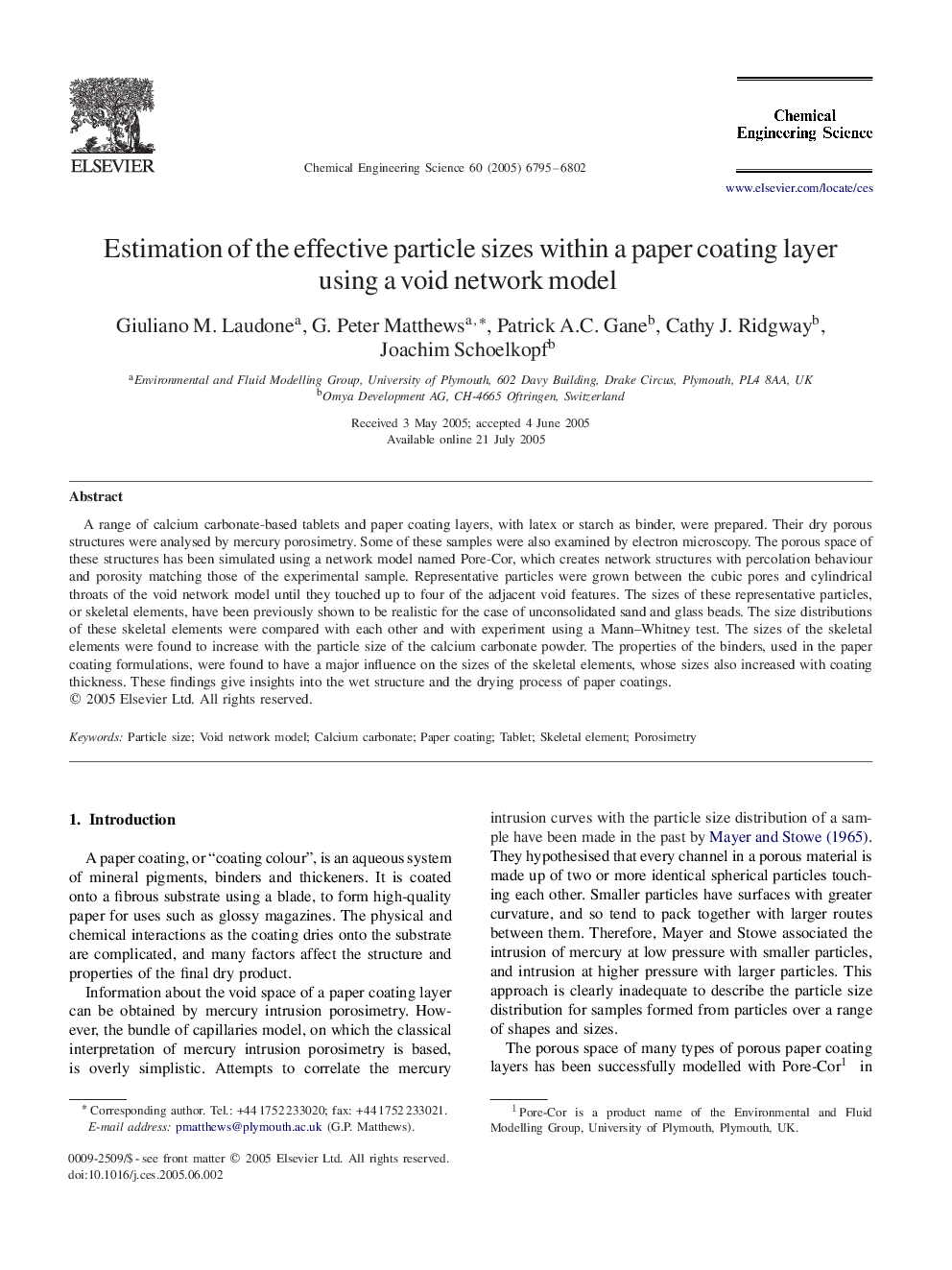| Article ID | Journal | Published Year | Pages | File Type |
|---|---|---|---|---|
| 161028 | Chemical Engineering Science | 2005 | 8 Pages |
A range of calcium carbonate-based tablets and paper coating layers, with latex or starch as binder, were prepared. Their dry porous structures were analysed by mercury porosimetry. Some of these samples were also examined by electron microscopy. The porous space of these structures has been simulated using a network model named Pore-Cor, which creates network structures with percolation behaviour and porosity matching those of the experimental sample. Representative particles were grown between the cubic pores and cylindrical throats of the void network model until they touched up to four of the adjacent void features. The sizes of these representative particles, or skeletal elements, have been previously shown to be realistic for the case of unconsolidated sand and glass beads. The size distributions of these skeletal elements were compared with each other and with experiment using a Mann–Whitney test. The sizes of the skeletal elements were found to increase with the particle size of the calcium carbonate powder. The properties of the binders, used in the paper coating formulations, were found to have a major influence on the sizes of the skeletal elements, whose sizes also increased with coating thickness. These findings give insights into the wet structure and the drying process of paper coatings.
